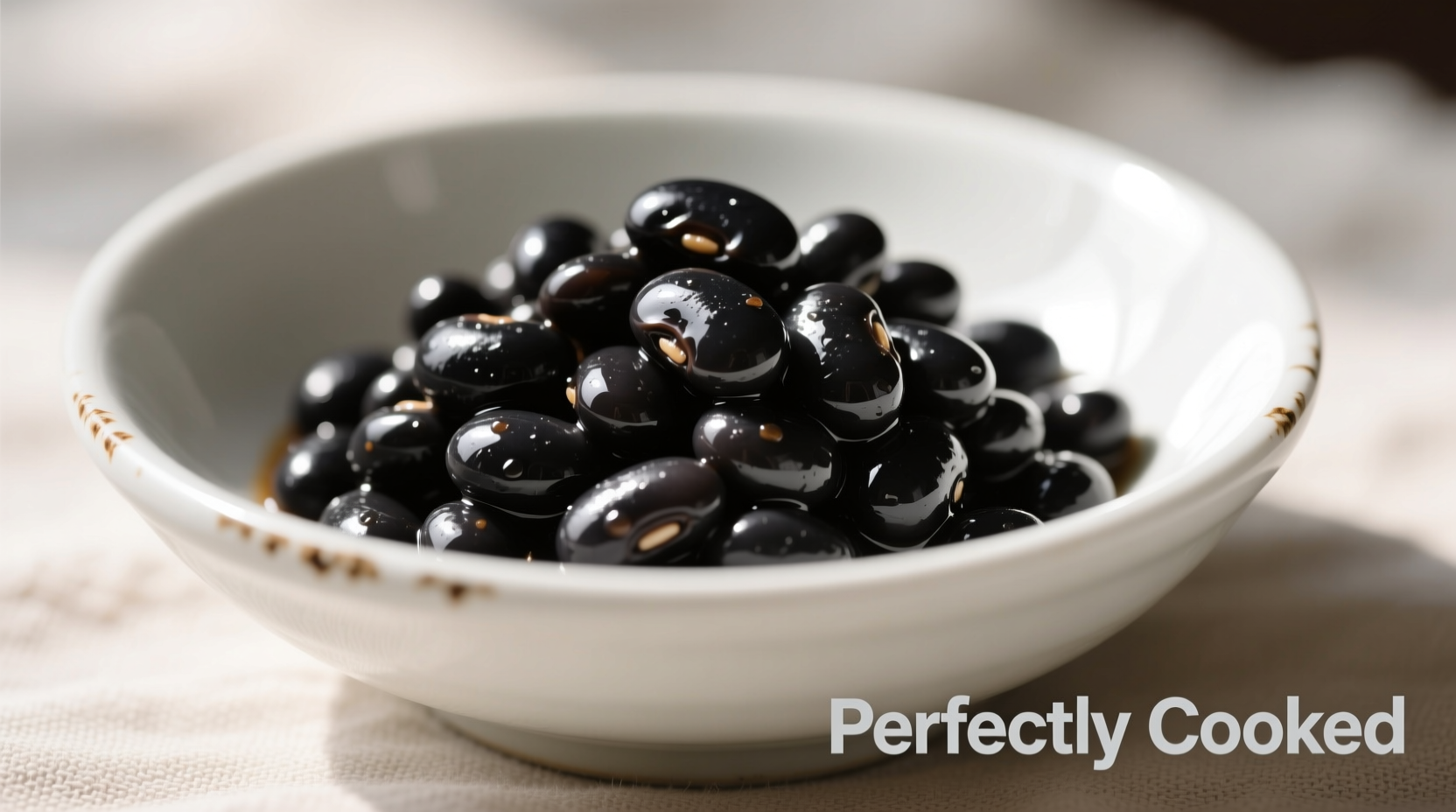Dehydrated black beans offer pantry stability, cost savings, and superior flavor control compared to canned varieties. Whether you're meal prepping, camping, or simply stocking your kitchen, mastering their preparation unlocks versatile protein for Latin American dishes, soups, and salads. This guide delivers precise water ratios, cooking times, and professional techniques that guarantee perfectly tender beans every time—no mushiness, no hardness.
Why Choose Dehydrated Black Beans?
Unlike canned alternatives, dehydrated black beans maintain their structural integrity during cooking, yielding creamier interiors with firmer skins. According to USDA food preservation guidelines, properly stored dried beans retain nutritional value for 2-3 years while canned versions often contain added sodium. The USDA National Institute of Food and Agriculture confirms dried beans preserve 90% of their protein content when stored below 70°F in airtight containers.
Essential Preparation Tools
Before cooking, gather these kitchen essentials:
- Large colander for rinsing
- 8-quart heavy-bottomed pot or Dutch oven
- Measuring cups with 1:3 bean-to-water ratio markings
- Wooden spoon for gentle stirring
- Airtight storage containers for leftovers
| Cooking Method | Total Time | Water Ratio | Best For |
|---|---|---|---|
| Overnight Soak | 9-12 hours | 3:1 | Weekend meal prep |
| Quick Hot Soak | 2 hours | 3:1 | Same-day cooking |
| No-Soak Simmer | 2-2.5 hours | 4:1 | Emergency meals |
| Pressure Cooker | 35 minutes | 2:1 | Weeknight dinners |
Step-by-Step Cooking Process
Pre-Cooking Preparation (5 minutes)
Spread 1 cup dehydrated black beans on a light-colored tray. Remove any stones or damaged beans—a critical food safety step recommended by the FDA Food Safety and Inspection Service. Rinse thoroughly under cold water using a fine-mesh strainer, agitating gently to remove dust. Proper cleaning prevents digestive discomfort from residual oligosaccharides.
Soaking Methods Compared
Traditional Overnight Soak: Cover sorted beans with 3 cups cold water plus 1 teaspoon baking soda (optional, softens skins). Soak 8-12 hours at room temperature. Discard soaking water before cooking to reduce gas-causing compounds by 25%, per Cornell University's College of Agriculture and Life Sciences research.
Quick Hot Soak: Boil beans in 4 cups water for 2-3 minutes, then remove from heat. Cover and steep 1 hour. Drain and rinse before cooking. This method reduces cooking time by 20% while maintaining texture integrity.
Perfect Simmering Technique
After soaking, place beans in pot with fresh cold water at 3:1 ratio. Bring to gentle boil, then reduce to bare simmer—bubbles should barely break the surface. Skim foam during first 15 minutes. Add aromatics like bay leaves or cumin seeds at this stage for flavor infusion. Never add salt or acidic ingredients (tomatoes, vinegar) until beans are fully tender, as this prevents proper rehydration.
Cook uncovered for 60-90 minutes, checking tenderness every 15 minutes after the 60-minute mark. Beans are done when they mash easily between fingers but maintain shape. Overcooking causes disintegration—remove from heat immediately when tender.

Pressure Cooker Shortcut (For Time-Pressed Cooks)
Rinse 1 cup beans and add to pressure cooker with 2 cups water and 1 teaspoon oil (prevents foaming). Lock lid and bring to high pressure. Cook 22 minutes at high pressure, then allow 15-minute natural release. Quick-release remaining pressure. This method cuts cooking time by 60% while maintaining texture, according to Kansas State University Research Extension.
Troubleshooting Common Issues
Problem: Beans remain hard after recommended cooking time
Solution: Older beans require longer cooking. Add 1/4 cup hot water and continue simmering in 10-minute increments. Avoid adding salt until fully tender.
Problem: Excessive foaming during cooking
Solution: Add 1 teaspoon oil to cooking water. Skim foam regularly during first 15 minutes of simmering.
Problem: Mushy texture with broken skins
Solution: You've overcooked the beans or added acid too early. Next time, reduce cooking time by 15 minutes and add salt only after beans are tender.
Storage and Usage Tips
Cool cooked beans in their cooking liquid for maximum flavor retention. Store in airtight containers with 1 cup cooking liquid for up to 5 days in the refrigerator, or freeze for 6 months. The cooking liquid ("pot liquor") contains valuable nutrients and flavor—use it as broth in soups or to adjust consistency in bean dishes.
For authentic Latin American recipes, add 1/2 teaspoon cumin and 1 minced garlic clove during the last 15 minutes of cooking. Avoid adding epazote (a traditional Mexican herb) until beans are nearly tender, as prolonged cooking diminishes its distinctive flavor compounds.











 浙公网安备
33010002000092号
浙公网安备
33010002000092号 浙B2-20120091-4
浙B2-20120091-4